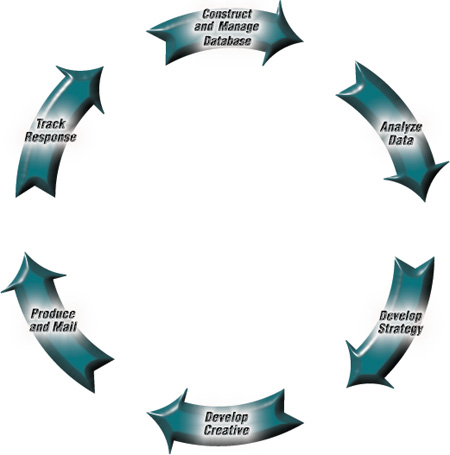

Analyzing Data
Bullseye uses analytical and statistical tools to "mine" hidden marketing opportunities. Our analysts have developed countless analyses and models to assist clients, and the results are used to craft database marketing strategies. Some of Bullseye's more frequent analytical projects are:
• Bank Profile - Bullseye has compiled detailed customer data from multiple bank databases into a proprietary "benchmarking" database. Using this database, Bullseye compares key marketing ratios across institutions to reveal "micromarkets" or segments of customers to target for cross-selling or customer retention activities. Bullseye produces a profile that includes the distribution of customer households by balance range, product category, number of services, and top ten service combinations. Bullseye conducts similar analyses for the mutual fund industry, but without the proprietary benchmarks.
• Retention Analysis - According to Bain & Co., only 8% of all companies know which customers are defecting in any one year. To address this issue, Bullseye compares two customer databases, usually one year apart, to detect defection trends and recommend retention strategies.
• Early Warning System - After looking at the results of the Retention Analysis, a client may want to prioritize which customers to target for retention efforts. Bullseye has developed an early warning defection model to identify households with the greatest propensity to defect. Once these households are identified, "at-risk" customers are targeted with proactive retention programs. Bullseye utilizes at least four consecutive databases, identifies defectors during the period, and based on correlation testing and regression analysis, predicts two months in advance the households that are apt to defect. The potential defectors are targeted with retention campaigns.
• Next-Most-Likely Product Purchase - Regression modeling predicts products the household is most likely to open next. The model scores customers based on their likelihood of opening each product offered. Specific cross-selling opportunities are uncovered by selecting households in the top deciles (or scores).
• Cluster Segmentation - Ultra Customers - A statistical technique called cluster segmentation is used to segment and analyze the top 5% or 10% of a company's customer file. Targeted marketing programs are developed for the distinct differences in product usage within this "ultra" customer group.
Click on the arrows below to learn more about Bullseye's six-step process.
